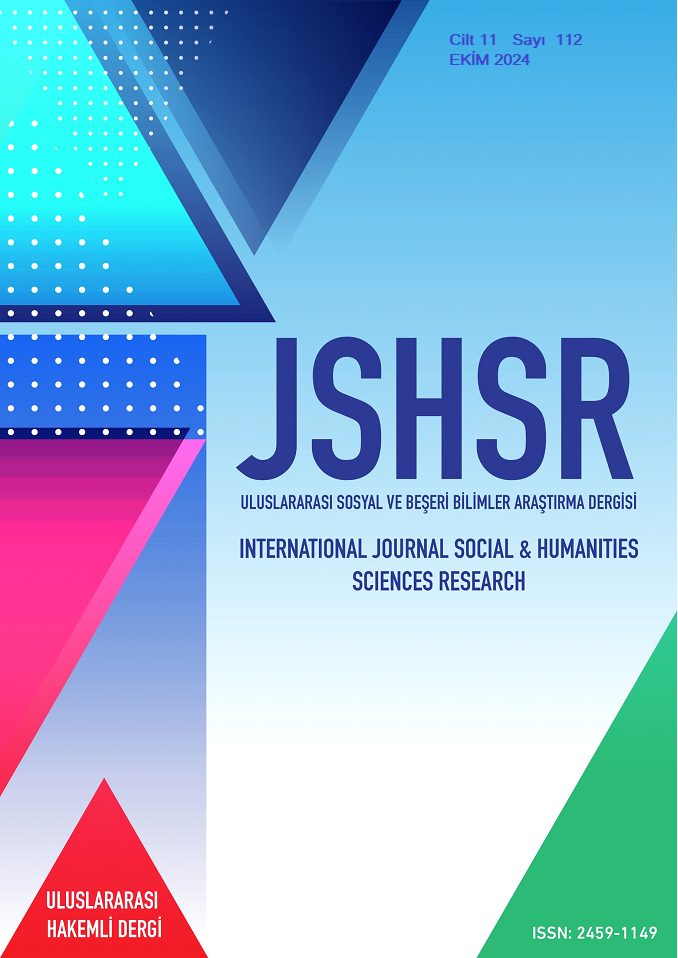The Impact of Korean Dramas on Social Identity: The Case of Uzbekistan
DOI:
https://doi.org/10.5281/zenodo.14020403Keywords:
Korean drama, Social identity, Uzbekistan, Cultural indicatorsAbstract
Throughout history, the world map has been redesigned and reshaped many times. The great empires that were on the stage of history centuries ago have disappeared and new states have been established in their place. With the dissolution of one of these empires, the Soviet Union, in the 1990s, some states that were previously on the stage of history but remained under the rule of the Soviet Union have re-emerged on the world stage. After major changes, nation-states that gained their independence have embraced their own essence and cultural values and have begun work to re-establish their cultural identities. Uzbekistan, which is among these countries, has chosen an original path in terms of political, economic and cultural contexts while working on cultural identity studies. While advancing its international political and economic structure, Uzbekistan has also put on its agenda studies that redesign both its historical and national cultural assets, which are important in terms of national values. Uzbekistan effectively uses mass media while reviving the national cultural identity of the society. One of the important elements of mass media is television series. Uzbekistan efficiently benefits from its own national television series, as well as television series of other countries that are similar to its own cultural structure. One of these is Korean TV series. After the independence, it was observed that the viewing rates of Korean TV series on Uzbek television increased and that the society loved and watched them, and that there were changes in the identity of the society. The study was initiated on this assumption and its aim was to analyze the effect of Korean TV series on the Uzbek social identity. In the study, the Korean TV series ‘Jewel in the Palace’, which was released in 2003, was examined using content analysis method in the context of Gerbner’s theory of cultural indicators.
Keywords: Korean drama, Social identity, Uzbekistan, Cultural indicators
References
Adorno, T. (2009). Kültür Endüstrisi: Kültür Yönetimi Ülner, V., Tüzel M. & Gen E. (Çev.) İletişim Yayınları.
Alyakut, Ö. (2016). Postmodern toplumda kadın kimliğinin bedeni üzerinden inşası. Uluslararası Sosyal Araştırmalar Dergisi, 9 (47), 696-708.
Aydoğdu, H. (2004). Modern kimlikte öznenin ölümü. Kazım Karabekir Eğitim Fakültesi Dergisi, (10), 115-147.
Aziz, A. (1981). Radyo ve Televizyona Giriş. Ankara Üniversitesi Siyasal Bilgiler Fakültesi Yayınları.
Barutçugil, İ. (2011). Kültürler Arası Farklılıkların Yönetimi. Kariyer Yayınları.
Berelson, B. (1952). Content Analysis in Communication Research. Free Press.
Bilgin, N. (1999). Kolektif Kimlik. Sistem Yayıncılık.
Çakır, V., & Kınıt, E. (2014). Televizyon dizilerinde ürün yerleştirme ve sponsorluğun sorunları. Global Media Journal: TR Edition, 5(9), 19-47.
Dalbay, R. (2018). “Kimlik” ve “toplumsal kimlik” kavramı. Süleyman Demirel Üniversitesi Sosyal Bilimler Enstitüsü Dergisi, 2 (31), 161-176.
Deneçli, C. (2013). Küresel markalar, yerellik ve kültürel göstergeler. The Turkish Online Journal of Design, Art and Communication, 3(1), 1-11.
Gerbner, G., Gross, L., Morgan, M., Signorielli, N., & Shanahan, J. (2002). Growing up with television: Cultivation processes. J. Bryant, & D. Zillman (Eds.), In Media Effects: Advances İn Theory And Research (2nd edition) (pp. 43-67). Lawrence Erlbaum.
Güngör, N. (2013). İletişim Kuramlar ve Yaklaşımlar. Siyasal Kitabevi.
Güz, N. ve Küçükerdoğan, R. (2005). Göstergeküreler, reklam ve "öteki" kavramı. Journal of İstanbul Kültür University, (1), 65-73.
Hoftstede, G. (2005). Cultures and Organizations. (2nd edition), Mc. Graw Hill.
Horkheimer, M. v. (1996). Aydınlanmanın Diyalektiği. Koçak, O (Çev.). Kabalcı Yayınevi.
Hun, L. B. (2003). Saraydaki Mücevher (대장금) (Sinema Filmi). Byoung-hoon Lee.
Keyman, F. (2007). Türkiye’de kimlik sorunları ve demokratikleşme. Doğu Batı Düşünce Dergisi, (41) 217-230.
Kırtepe, S. (2014). Televizyon dizilerinin toplum üzerindeki etkileri sosyo-kültürel bir çözümleme (Erzurum örneği). (Yayınlanmamış Doktora Tezi) (372378) Sosyal Bilimler Enstitüsü, Atatürk Üniversitesi.
Kim, S.-J. (2009). Interpreting transnational cultural practices: social discourses on a korean drama ın japan. Hong Kong and China. Cultural Studies, 23 (5/6), 736-755.
Kula, N. (2012). TV dizileri yoluyla yeniden üretilen tüketim kültürü. Tarih Kültür ve Sanat Araştırmaları Dergisi, 4(1), 507-530.
Küçükerdoğan, R. (2009). Reklamda Kültürlerarasılık. Es Yayınları.
Metaveevinij, V. (2008). Key success factors of Korean TV industry structure that leads to the popularity of Korean TV dramas in a global market. Journal of East Asian Studies, 12(2), 99-139.
Mutlu, E. (1991). Televizyonu Anlamak. Gündoğan Yayınları.
Mutlu, E. (2008). Televizyonu Anlamak. (2. Basım), Ayraç Kitabevi.
Özdemir, C. (2001). Kimlik ve söylem. Osmangazi Üniversitesi Sosyal Bilimler Dergisi, 2(2), 98-112.
Özer, Ö. (2005). Televizyonun yetiştirme rolü: Ankara Çevik Kuvvet örneği. Gazi Üniversitesi İletişim Dergisi, (20), 1-20.
Parsa, S. (1994). Televizyon Estetiği. Ege Üniversitesi Yayınları.
Postman, N. (2004). Televizyon: Öldüren Eğlence Gösteri Çağında Kamusal Söylem. Akınay, O. (Çev.), Ayrıntı Yayınları.
Ünür, E. (2013). Türk televizyon dizilerinde toplumsal kimliklerin temsili. Erciyes İletişim Dergisi, 3 (2), 32-42.
Yaylagül, L. (2012). Kitle İletişim Kuramları. Dipnot Yayınları.
Downloads
Published
How to Cite
Issue
Section
License
Copyright (c) 2024 INTERNATIONAL JOURNAL OF SOCIAL HUMANITIES SCIENCES RESEARCH

This work is licensed under a Creative Commons Attribution 4.0 International License.


